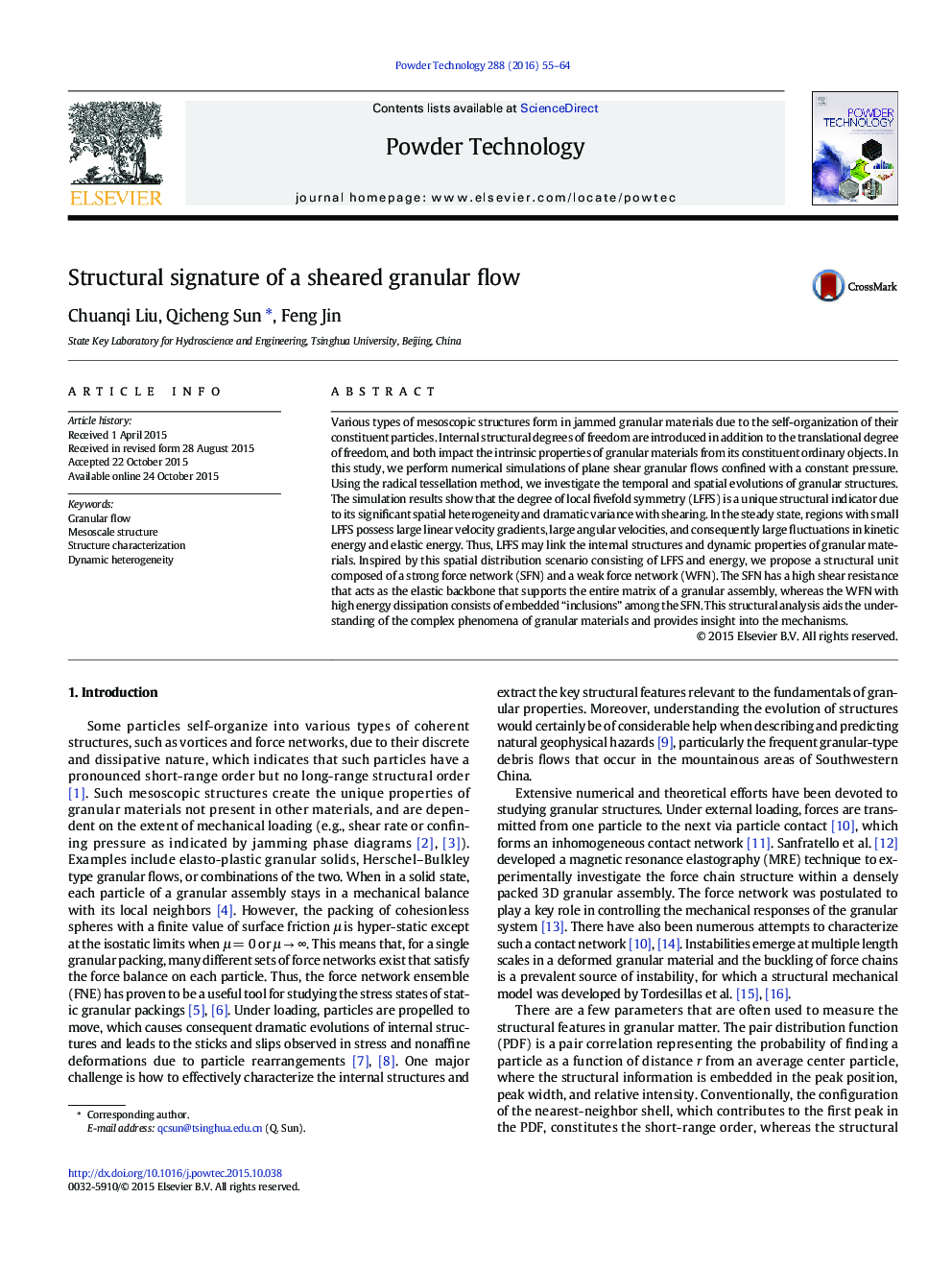| Article ID | Journal | Published Year | Pages | File Type |
|---|---|---|---|---|
| 235482 | Powder Technology | 2016 | 10 Pages |
•The temporal and spatial evolutions of granular structures were investigated.•The role of the pentagon polygons was found unique.•A structural unit composed of strong/weak force network was proposed.
Various types of mesoscopic structures form in jammed granular materials due to the self-organization of their constituent particles. Internal structural degrees of freedom are introduced in addition to the translational degree of freedom, and both impact the intrinsic properties of granular materials from its constituent ordinary objects. In this study, we perform numerical simulations of plane shear granular flows confined with a constant pressure. Using the radical tessellation method, we investigate the temporal and spatial evolutions of granular structures. The simulation results show that the degree of local fivefold symmetry (LFFS) is a unique structural indicator due to its significant spatial heterogeneity and dramatic variance with shearing. In the steady state, regions with small LFFS possess large linear velocity gradients, large angular velocities, and consequently large fluctuations in kinetic energy and elastic energy. Thus, LFFS may link the internal structures and dynamic properties of granular materials. Inspired by this spatial distribution scenario consisting of LFFS and energy, we propose a structural unit composed of a strong force network (SFN) and a weak force network (WFN). The SFN has a high shear resistance that acts as the elastic backbone that supports the entire matrix of a granular assembly, whereas the WFN with high energy dissipation consists of embedded “inclusions” among the SFN. This structural analysis aids the understanding of the complex phenomena of granular materials and provides insight into the mechanisms.
Graphical abstractFigure optionsDownload full-size imageDownload as PowerPoint slide
